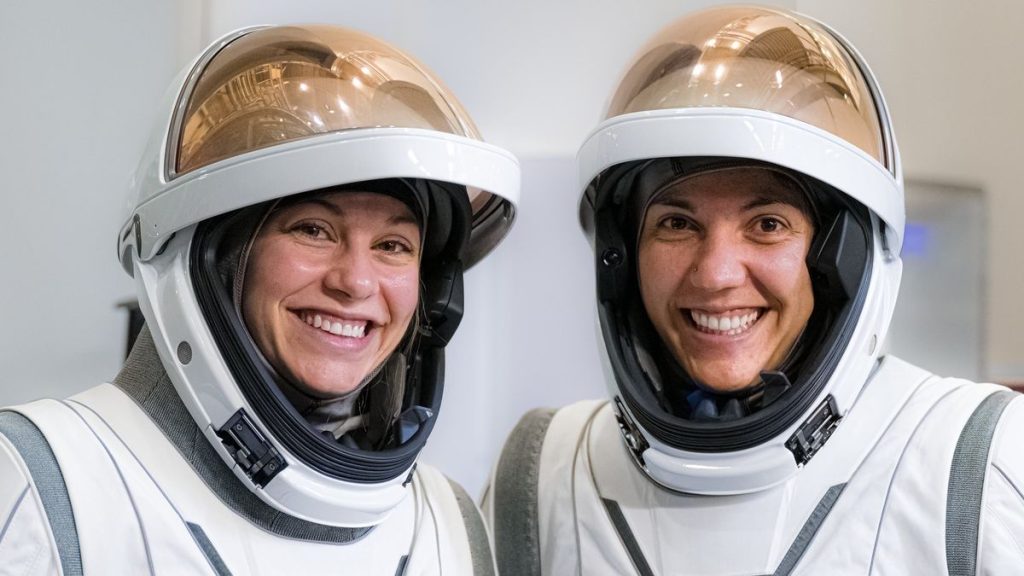Two women astronauts will set a spaceflight record next week, if all goes according to plan.
The Polaris Dawn mission is scheduled to launch atop a SpaceX Falcon 9 rocket no earlier than Aug. 27. It aims to perform the first-ever private spacewalk and to fly at a higher altitude above Earth than any crewed spacecraft since the Apollo era, at about 870 miles (1,400 kilometers). The mission is funded and commanded by billionaire Jared Isaacman, who also funded and commanded the private Inspiration4 orbital mission in 2021.
Polaris Dawn’s four-person crew includes female mission specialists Sarah Gillis and Anna Menon, both of whom are SpaceX engineers, as well as male pilot Scott “Kidd” Poteet. The highest-flying woman before Gillis and Menon was NASA astronaut Kathryn Sullivan, who reached 386 miles (621 km) on the STS-31 mission during the space shuttle program, according to NASA and space statistics tracker Jonathan McDowell of the Harvard-Smithsonian Institute of Astrophysics.
STS-31’s extreme altitude was a result of its main goal: deploying the Hubble Space Telescope, a top-tier space observatory still active today thanks to the efforts of spacewalking astronauts on five different servicing missions. On board STS-31 were five astronauts, including Sullivan, who reached space just seven years after NASA flew its first woman astronaut (Sally Ride, in June 1983).
The five Hubble servicing missions, which flew between 1993 and 2009, reached lower altitudes than STS-31. While a few crewed missions ranged farther into space than Hubble’s height, all of those were performed by male-only crews.
The highest mission in Earth orbit featured NASA astronauts Dick Gordon and Pete Conrad, aboard Gemini 11 in September 1966. They reached a pre-Apollo altitude record of 850 miles (1,368 km), which Polaris Dawn aims to beat.
The historic Apollo program missions carried only male astronauts. Apollo 8, which launched in December 1968, was the first of these flights to reach the moon. It was followed by Apollos 10 through 17, which flew from 1969 to 1972.
The farthest-ranging of the group was Apollo 13, which reached a distance of 248,655 miles (400,171 km) from our planet in April 1970. Its orbit was slightly different than the others; its planned lunar landing was foiled by an explosion in the mission’s service module two days into the flight. NASA and the Apollo 13 astronauts troubleshot the potentially catastrophic issue, slingshotting the spacecraft around the moon and returning to Earth safe and sound on April 17, 1970.

